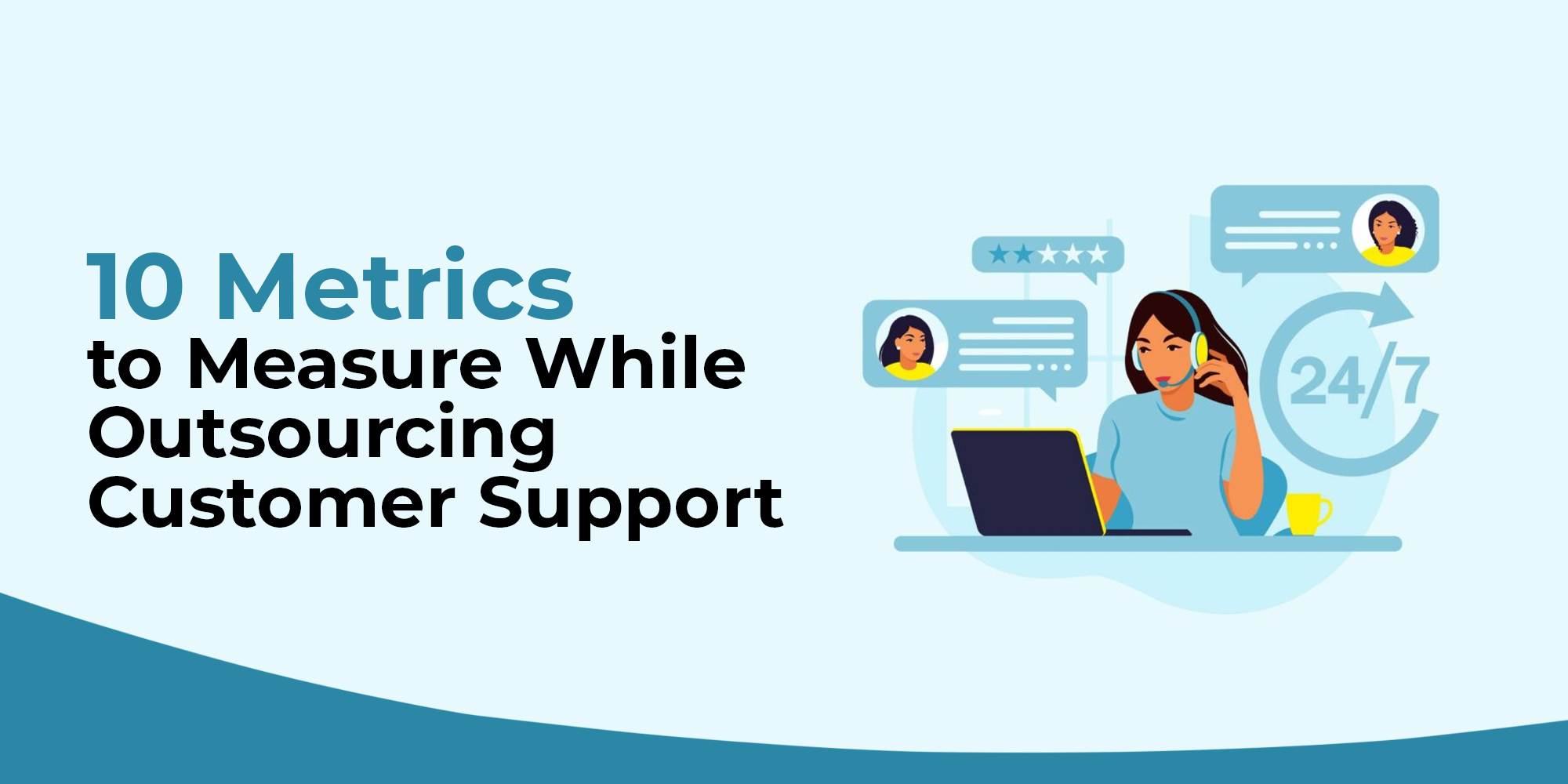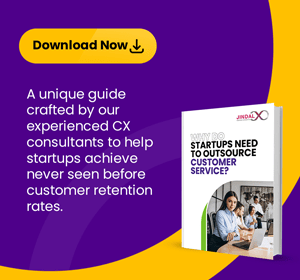
Are you prepared to entrust a call centre with providing your customer service? A good customer experience (CX) depends on monitoring client happiness and loyalty, and knowing the essential metrics will help you do that, even if you are outsourcing to a call centre.
Business operations can be greatly enhanced by outsourcing. The market value of outsourcing rose significantly from $76.9 billion in 2016 to $92.5 billion in 2019. Outsourcing of customer care is responsible for this expansion. Furthermore, according to a Strategy & Business magazine, 70% of organisations agreed that cost savings was the main reason they were looking for outsourcing solutions.
Utilising standards or benchmarks known as key performance indicators (KPIs) is essential for determining whether an outsourcing initiative was successful. KPIs give you the ability to assess how effectively your business goals are being accomplished. Your KPI data can also assist you in identifying business issues that require improvement in order to outperform your rivals.
Raising the standard of their customer service is listed as the top priority by 45.9% of companies. This is due to the fact that 96% of consumers feel that the quality of customer service influences how loyal they become.
Customer service metrics represent how effective a company is at meeting its customers’ needs. Key performance indicators help to keep everyone on the same page. However, tons of customer service metrics can be utilized, and it can be overwhelming to choose which metric will suit your team.
These metrics will provide your business with crucial feedback on the effectiveness of your customer service strategy and areas where it may be strengthened.
1.) Average Response Time:
Fast issue resolution and immediate feedback are hallmarks of good customer service. A survey found that 33% of customers lose their enthusiasm when they have to repeat themselves when transacting with support reps. You can use various ticketing systems to calculate your customer support team’s ART, like Intercom, Help Scout, Zendesk, and Freshdesk. Finding areas for improvement is made easier by filtering the time data by agent, group, or time zone.
One of the fundamental metrics to assess the effectiveness of outsourced customer support is the average response time. This metric measures how quickly customer inquiries are addressed and resolved. A shorter average response time indicates a more efficient and responsive customer support team. Monitoring this metric helps identify bottlenecks and improve overall customer satisfaction.
2.) First Contact Resolution Rate (FCR):
To calculate your customer support team’s FCR rate, divide the number of cases resolved on the first call by the total number of cases handled by the agents. Then, multiply the quotient or resulting number by 100. For instance, if 200 out of 400 cases achieved FCR, your FCR rate is 50%.
FCR measures the percentage of customer inquiries that are resolved during the first interaction with the support team, without requiring further follow-up. A high FCR indicates that the outsourced customer support team is well-trained, knowledgeable, and capable of resolving customer issues promptly. By optimizing FCR, businesses can reduce customer frustration and improve their overall experience.
3.) Customer Satisfaction (CSAT) Score:
In the contact centre, it is customary to respond to 80% of calls within 20 seconds. However, in recent years, several contact centres have worked to raise their service standards by attempting to answer 90 percent of calls in 15 seconds.
What Is CSAT?
CSAT (Customer Satisfaction) is a vital metric used by businesses and organizations to gauge the level of satisfaction their customers experience with their products or services. It provides valuable insights into the overall customer experience and plays a crucial role in shaping business strategies and decision-making processes.
What Does CSAT Tell You?
CSAT measures the extent to which customers are content with a specific interaction, product, or service they have received. It typically involves asking customers to rate their satisfaction on a numerical scale or through a question with multiple response options (e.g., “How satisfied are you with our service?”). The results are then converted into a percentage or score to assess overall satisfaction levels.
How to Measure CSAT?
There are several methods to measure CSAT:
- Surveys: Conducting post-interaction surveys through email, web forms, or in-app pop-ups to directly ask customers about their satisfaction.
- Rating Scales: Utilizing numerical scales (e.g., 1-5 or 1-10) to collect quantifiable feedback on customer satisfaction.
- Net Promoter Score (NPS): Although not strictly CSAT, NPS is another popular metric to gauge overall customer loyalty and satisfaction by asking customers how likely they are to recommend a product or service to others.
- Customer Interviews: Conducting in-depth interviews with customers to gather qualitative insights on their experiences and satisfaction.

To determine CSAT, you can survey customers to answer a simple question. For example, “On a scale of 1 to 5, how satisfied are you with your recent solution?”
Customers who provided low-scoring responses should have their answers thoroughly reviewed, and you should consider potential areas for improvement where you can revise procedures or provide further agent training.
The CSAT score is a direct measure of customer satisfaction with the support provided. It is typically obtained through post-interaction surveys or feedback forms. When outsourcing customer support, it is crucial to monitor the CSAT score to ensure that customer expectations are being met or exceeded. By analysing and acting upon customer feedback, businesses can continuously improve their outsourced customer support processes.
- Email– 95% of emails answered within four hours (the better contact centres are aiming to respond to 80% of emails within 15 minutes).
- Live chat – 80% of chats answered within 40 seconds.
- Letters – 95% of letters answered within three days.
- Social Media – 80% of contacts answered within 20 minutes.
- SMS/messaging apps – 80% of messages responded to within 40 seconds.
4.) Escalation Rate:
The escalation rate represents the percentage of customer inquiries that need to be escalated to a higher-level support team or supervisor for resolution. 31% of clients claim that knowledgeable customer service consultants are essential to their pleasure.
A high escalation rate may indicate a lack of training, insufficient knowledge, or inadequate resources among the outsourced support team. By monitoring and minimizing the escalation rate, businesses can ensure that customer issues are resolved promptly at the first point of contact, leading to improved customer satisfaction.
5.) Service Level Agreement (SLA) Compliance:
When outsourcing customer support, it is essential to establish a Service Level Agreement (SLA) that outlines the expected response times, resolution times, and overall service quality. Monitoring SLA compliance helps measure the outsourced team’s adherence to the agreed-upon standards and ensures that service levels are being met consistently.
6.) Customer Retention:
The percentage of your consumers that contacted you with a problem should be monitored. Did they return and make another purchase from you? Did you handle their problem well enough to prevent a rift in your client relationship? To achieve a 360-degree customer perspective, this will need integrating into your CRM platform and ensuring that all systems (agent desk, eCommerce, etc.) are feeding data into and out of your CRM.
Retention helps save resources because it costs five times more to acquire a new customer than it does to keep an existing one. A 5% increase in retention could result in a 25 to 95% increase in revenue.
7.) Total Tickets and Tickets Per Customer:
The most straightforward KPI for customer care teams to track is the overall number of support tickets submitted. In addition to tracking the top-line total, you should also look at how volume varies during the day, week, and seasons. Tracking tickets per customer can help inform resource allocation through the lens of long-term vs. short-term needs.
53% of shoppers do not believe their feedback is heard and reflected in the statistics. Not seeing any improvement would prompt them to abandon the service and seek a better solution elsewhere.
8.) Abandonment Rate:
A high abandonment rate can indicate that customers are frustrated with the support process, leading them to give up on getting their issues resolved.

Let’s illustrate this with an example:
Suppose a company receives 1,000 support calls in a month. Out of those, 300 customers hang up or disconnect the call before they receive any assistance. To calculate the abandonment rate:
Abandonment Rate = (300 / 1000) x 100 Abandonment Rate = 30%
Interpreting the Results: In this example, the abandonment rate is 30%. This means that 30% of customers who reached out for support ended up abandoning their interaction before getting any help. A high abandonment rate like this could be a cause for concern, as it indicates potential issues in the support process, such as long wait times, unclear IVR (Interactive Voice Response) systems, or unhelpful representatives.
High abandonment rates may have several negative implications for the business, including:
- Customer Frustration: Customers who abandon the support process may become even more dissatisfied with your company, potentially leading to negative word-of-mouth.
- Lost Opportunities: Abandoned interactions represent lost opportunities to resolve customer issues and retain their loyalty.
- Impact on Customer Retention: Dissatisfied customers are more likely to churn and switch to competitors.
- Reduced Efficiency: High abandonment rates can lead to inefficiencies in the support team, causing additional strain on resources.
Addressing High Abandonment Rates: To address a high abandonment rate, businesses can consider implementing the following strategies:
- Reducing Wait Times: Implement measures to reduce wait times for customers, such as increasing support staff during peak periods or offering callback options.
- Improving IVR: Optimize the Interactive Voice Response system to direct customers to the right department or representative efficiently.
- Training Support Representatives: Provide additional training to support representatives to enhance their problem-solving and communication skills.
- Customer Feedback: Gather feedback from customers who abandoned interactions to identify common pain points and areas for improvement.
By monitoring the abandonment rate and taking proactive steps to improve the support process, businesses can enhance customer satisfaction, reduce churn, and build stronger relationships with their clientele.
9.) Net Promoter Score (NPS):
Net Promoter Score (NPS) is a metric used to measure customer loyalty and satisfaction by asking a simple question: “On a scale of 0 to 10, how likely are you to recommend our company/product/service to a friend or colleague?” Based on the responses, customers are categorized into three groups:
a.) Promoters (score 9-10): Customers who are highly satisfied and likely to recommend your business.
b.) Passives (score 7-8): Customers who are satisfied but not enthusiastic enough to promote your business actively.
c.) Detractors (score 0-6): Customers who are dissatisfied and may spread negative feedback about your business.
To calculate NPS, subtract the percentage of Detractors from the percentage of Promoters:
NPS = % of Promoters – % of Detractors
For example, if you receive responses from 100 customers, and 60 are Promoters, 20 are Passives, and 20 are Detractors:
NPS = (60/100) – (20/100) = 40
NPS Statistic: According to a 2021 Customer Experience Trends Report by Qualtrics, the average NPS across industries is around 32.
Interpretation: An NPS of 40 in the example above indicates that the business has a relatively positive customer sentiment, as it’s above the average NPS. However, there is room for improvement to convert more customers into Promoters.
10.) Average Resolution Time (ART):
Average Resolution Time (ART) measures the average time it takes for a customer support team to resolve an issue from the moment it is reported. This metric is crucial because customers value quick problem-solving and efficient support.
To calculate ART, add the resolution times of all cases and divide by the total number of cases:
ART Statistic: The ART can vary widely depending on the complexity of issues, industry, and support channels. As of my last update in September 2021, there’s no universal industry-standard benchmark for ART. However, companies often set internal targets based on their specific support goals and customer expectations.
Interpretation: A lower Average Resolution Time is generally better, as it indicates that customers’ issues are being resolved quickly. However, it’s essential to find the right balance between speed and quality. Rushing through resolutions may result in subpar solutions and dissatisfied customers.
Keep in mind that while statistics can offer insights, the context of your specific business and customer needs is essential in interpreting and setting targets for these metrics. Regularly tracking and analysing these metrics will help you identify areas for improvement and optimize your customer support operations effectively.
A Satisfied Customer is a Happy Customer
A happy client can boost your company’s profitability by recommending you to others, spreading the word about you through word-of-mouth advertising, and endorsing you with five-star reviews. Ensure your customers are happy by using related KPIs to measure your customer support’s speed and quality of service.
If you plan to outsource your customer service functions, consider an BPO company with decades of successful track record like JindalX. A specialised workforce that works as an extension of your company can be planned, built, and managed with our assistance across locations. Contact us today to learn more about how our business process outsourcing services can help you grow your business!
Outsourcing customer support can bring numerous benefits to businesses, including cost savings, scalability, and access to specialized expertise. The primary justification given by 59% of companies for engaging a customer service outsourcing team is to lower operating costs. The choice is particularly well-liked by startups and small enterprises because they may lack the funding for a support staff.
However, to leverage these advantages effectively, it is crucial to establish and monitor key metrics that evaluate the performance and effectiveness of the outsourced team. By measuring metrics such as average response time, FCR, CSAT score, AHT, escalation rate, and SLA compliance, businesses can gain insights into the efficiency and quality of their outsourced customer support operations. These metrics not only help identify areas for improvement but also contribute to enhancing overall customer satisfaction and loyalty, ultimately driving business success.









